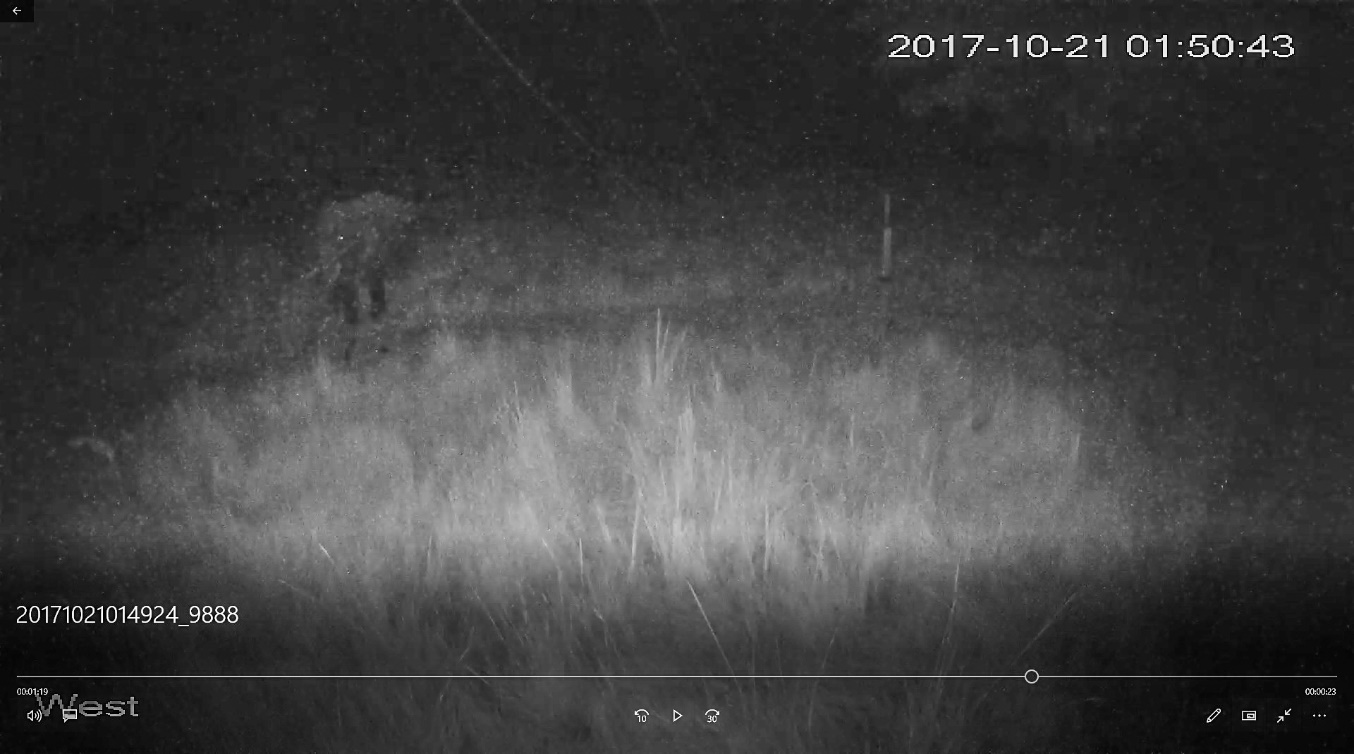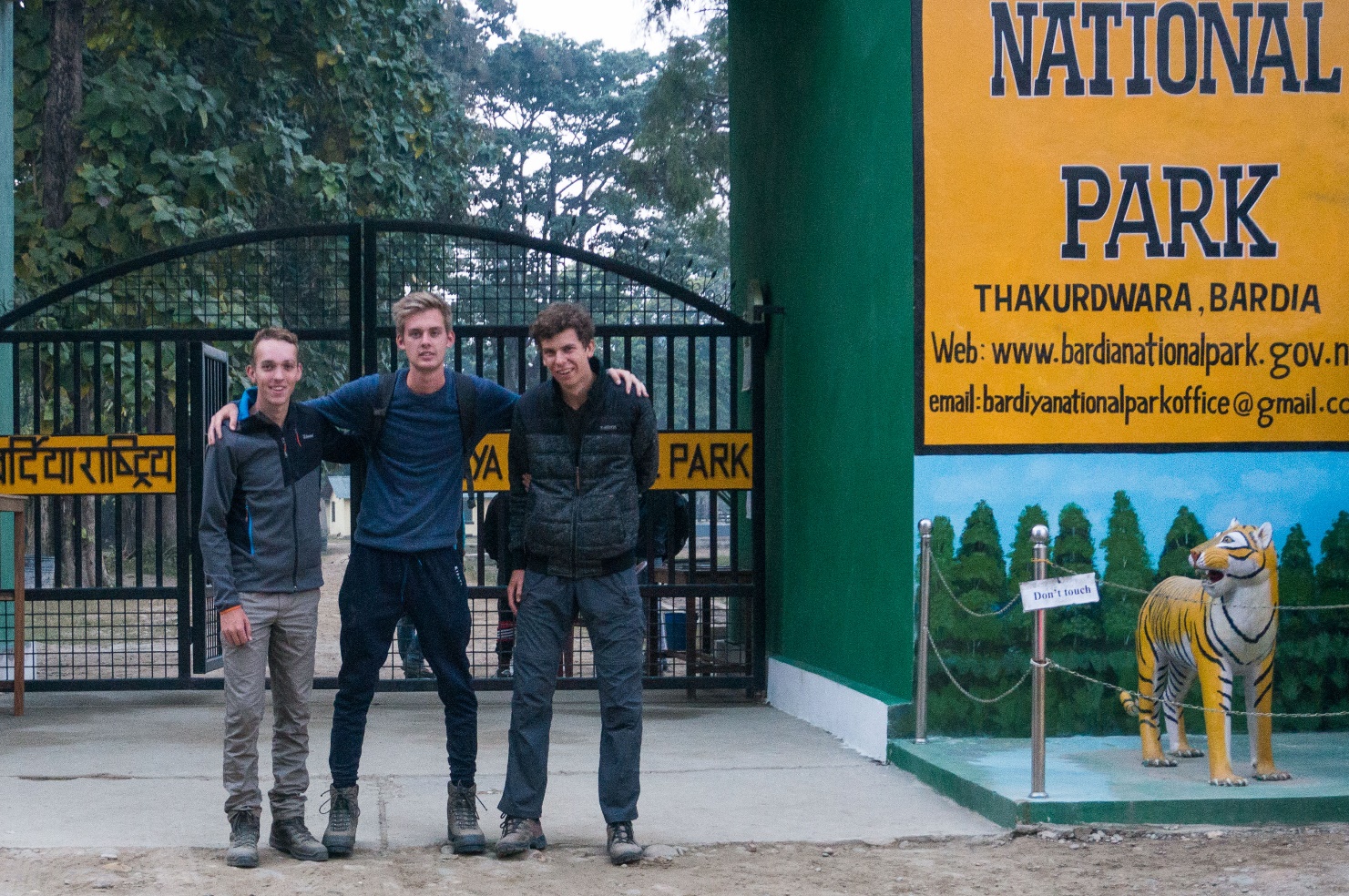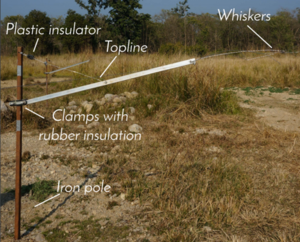Elephant withholding fence project

Bardiyan Elefence Project
Minor International Entrepreneurship & Development 2017
Location
Bardia National Park, Nepal
Students
Niek Buchner
Casper Pierik
Cornel Weststeijn
The Himalayan Tiger Foundation is situated in Nepal to double the population of endangered tigers by 2022 in the Bardiyan National Park. However, protecting wildlife in the natural areas also causes an increase in the population of the Asian elephant. The elephant's hide themselves in the forests and come out at night to find food. In the past years, the inhabitants of Bardiyan National Park have encountered problems with these Asian elephants. The very intelligent animals steal food from the fields, damage the fields and houses and cause nuisance in the nearby villages. Many harvests have not been successful or even failed because of the problems with these brutal elephants. Given the fact that many relatively poor farmers are fully dependent on a good harvest, frustrations and concerns about the current situation are getting big. The latest data of the elephant attacks in two areas in the buffer zone say that the total yearly damage lays between 4 and 6 million NPR. The inhabitants now even doubt about the nature conservation and would prefer to cut the forests (the shelter of the elephants at daytime) in order to be out of trouble in the short term.
On behalf of Nepalese institutes, the WWF and in cooperation with the Himalayan Tiger foundation, The University of Wageningen has designed a new type of fence. Through this electric fence, Asian elephants must be excluded from the cultivated pieces of land and villages. If the design works, the the Bardiyan farmers are prepared to finance the implementation thereof. The electrical fence is first and foremost a precautionary measure against the damage caused by elephants. The first version of the electric fence has been designed and is in the test phase.
During our stay in Nepal our assignment changed a bit, because a few days before we arrived in Nepal a tusker elephant visited our test fence and destroyed it. The project is now more focused on the design process of the fence, than on the original idea of implementing the fence. The week after we arrived we already managed to update the fence and place the new test fence in the park, but since then no elephants have visited the test site.

While we wait for the elephants to arrive at our testsite, we are busy with different parts of the project, such as:
- Reviewing and testing the present design and improving it if possible. This is also important because of some places in the landscape where the standard version of the fence will not work, for example because the fence has to cross water.
- Design and produce three solarstations, keeping the local environment of Bardia into account. We made production drawings and are now finishing the stations for all the electronic parts of the fence.
- Look into the issue of conductivity during (monsoon)rain. When the produced concrete poles conduct too much, there must be found a way of isolation the poles so that there is minimal energy loss.
- Make a spatial planning of the fence in the area where the fence will be placed. Together with the farmers we will decide where the exact fence will be placed, trying to place as much fields and houses within the fence as possible. We’ll also make a GPS database with all poles, gates and river inlets with their locations and, if any, comments on placement.
- Make a manual for operation and maintenance for the Nepali fence mechanics. The manual must consist how the leaks and broken places in the fence can be found and fixed. And how the fence has to be maintained.
- The entrepreneurial element of the project is researching a cost recovery model for the local farmers in the long term. This needs to be developed and put in place, both from a financial and organizational perspective. With this a plan of repayment can be made. On top of this the value can be proven to other areas that struggle with the same issues.

Delivered products and continuation project
Our three-months internship in Nepal has come to an end. We had a great experience in Nepal where we learned a lot. This final short article gives a short explanation about the products we delivered and the continuation of the project now we are back in The Netherlands.
The first delivered product is a new fence design. Where the first design of Wageningen University was destroyed by elephants just before we arrived in Nepal, we could start immediately with analyzing the flaws in the design and making a new design. The new design is placed at a test site to be tested by elephants in the National Park.

The design is based on a principle where conducting materials and flexibility are combined to keep elephants away from the pole. We used a aluminum arm to keep the live wire on a distance from the pole so that the elephant can’t reach the pole with his trunk, and ‘whiskers’ made out of aluminium wire to prevent large male hants from hooking the live wire with their non-conducting tusks. (see image). For capriciousness in the landscape like river inlets and gates we made special customized designs.
Another delivered product is a spatial planning for the fence. We went into the field with the local farmers and landowners where the poles of the fence will be placed, to decide everywhere how to cross their land and where to place the gates. We made a GPS waypoint database with the coordinates of all the poles and an excel sheet with al the gates and river inlets (which need a special fence design because elephants can go underneath the wire at these spots). All this could be used in the construction and maintenance program of the fence.
Besides, another product we delivered are three solar stations. To ensure a good power supply we constructed three solar stations. Two for the power supply of the fence and one for a mobile camera monitoring system, to monitor how elephant are able to breach the fence. The solar stations consist of a box where the battery, energizer and the charger can be stored, and a slanted surface to attach the solar panel.
Also a fence manual is made to transfer knowledge and make sure our fence design can be operated properly when we are not around anymore. The manual consist general information about the physics of electric fencing. It also explains the principle of our fence design and how to build, maintain and repair the fence when necessary. This manual can be used in the future for training technicians that will be assigned to operate and maintain the electric fence.
Finally, we also delivered some financial input. We made in cooperation with Wageningen University a budget for the fence. The budget, in combination with the baseline study that Wageningen University executed which did research about the costs of the damage done by the elephant attacks every year, gives a clear image about the full financial picture of the project.
Because of the absence of elephant attacks and thus the prove that our fence design works, the increasing pressure from the local communities and the fact that importing the needed materials from the Netherlands is time consuming, the local government will start building a conventional fence design. Materials that are present in Nepal are used in this conventional design, that will possibly be adjusted into our fence design in the future. An advantage of this is that the research to the best fence design in the National Park can continue without the pressure of the local community.